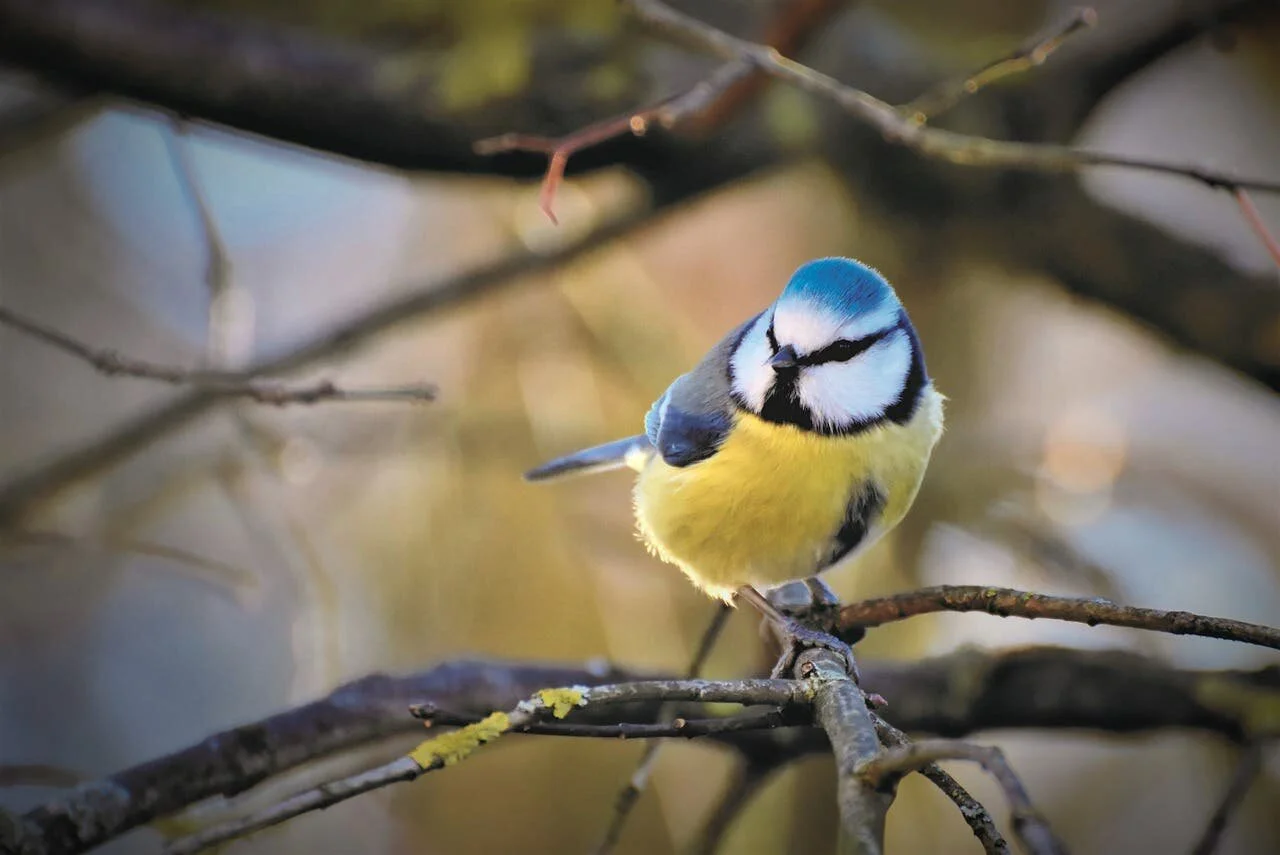Blue Tits are one of our most familiar species, and official winners of the cutest face competition for 800 years running.
They seem happy to live in close proximity to humans, and make the most of our efforts to bring them even closer via the medium of peanuts.
Their song, however, is not one that we grasp as easily as some others.
It’s two or three high, thin notes, followed by a rapid twittering at a lower pitch.
That sound is all around us in spring, but Blue Tits are often tucked into vegetation when they sing, so it’s not always obvious who’s making the noise.
The song also sounds rather similar to other noises that Blue Tits make, so it doesn’t stand out as clearly as a song in the way that the Great Tit’s ‘teacher teacher’ does.
Personally I find separating many of the alarm calls between Great and Blue tits rather tricky - they both love to making fast, churring noises.
However, as you can hear in parts of this recording, one of the common Blue Tit sounds has a similar structure to their song (a few quick high notes, followed by the lower chattering).
Fortunately Blue Tits are very distinctive looking, so even a brief look will normally be enough to clinch the identity.
All their eggs in one basket
Blue Tits tend to have one large brood, laying their eggs in April, and timing the arrival of their chicks with the burst of new leaves coming out and the availability of tiny caterpillars that comes with it. They typically lay 8-10 eggs, but have been know to produce up to 16. So that’s a lot of mouths to feed, and makes it crucially important that they get the timing right.
Their liking to our gardens is something of a trade off. They are originally a woodland species, and the availability of caterpillars for their young in spring is generally higher in woodland. However, their ability to survive through the winter seems to be significantly boosted by garden bird feeders.
And there may be many more Blue Tits using your garden in the winter than first meets the eye. Studies have suggested that a garden with five Blue Tits on the feeders at any one time is likely to have 20 or more different birds passing through during the course of the day.

